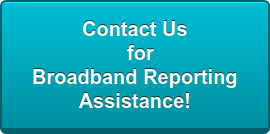 Is Opportunity Knocking?
Is Opportunity Knocking?
The FCC is also moving forward with new rules banning malicious caller ID spoofing of text messages and international phone calls. In addition, it will adopt rules to make it easier to reach 911 from places that use multi-line telephone systems (MLTS). The reforms would allow hotel guests and others to call 911 directly without using a prefix, and would establish dispatchable location requirements (like a specific address or suite number) so that first responders can reach people in need.
The rest of the meeting will focus on the FCC’s Rural Health Care program, a first-of-its-kind 833 prefix toll-free number auction, updating technical rules for Low-Power FM stations, and local franchising authorities and how they regulate cable operators.

Let’s dive into a closer look at some of the top items.
 Rural Digital Opportunity Fund
Rural Digital Opportunity Fund
This Notice of Proposed Rulemaking seeks comment on establishing a new support mechanism—the Rural Digital Opportunity Fund—that would build on the success of the CAF Phase II auction to provide up to gigabit service to millions of unserved Americans through a competitive auction.
Among other things, the Notice of Proposed Rulemaking would:
- Establish the Rural Digital Opportunity Fund, which would target support to areas that lack access to 25/3 Mbps broadband service;
- Implement the Rural Digital Opportunity Fund through a two-phase approach that would allocate support using a multi-round, descending clock auction—Phase I would allocate support to wholly unserved census blocks and Phase II would allocate support to unserved locations in partially unserved census blocks along with areas not won in Phase I; and
- Set a budget of $20.4 billion in high-cost universal service support over a 10-year support term, making available at least $16 billion for Phase I and the remainder available for Phase II.
Digital Opportunity Data Collection
Precise broadband deployment data is critical to the FCC’s efforts to bridge the digital divide. The FCC’s current census-block level broadband deployment reporting on Form 477 has been an effective tool for helping the FCC target universal service support to the least-served areas of the country, but more granular data is needed to direct funding to fill the “gaps” in broadband coverage—those areas where some, but not all, homes and businesses have access to modern communications services.
The Report and Order would:
- Establish the Digital Opportunity Data Collection—a new data collection that will collect geospatial broadband coverage maps from Internet service providers, specifically aimed at advancing the FCC’s universal service goals;
- Adopt a process to collect public input, commonly known as “crowdsourcing,” on the accuracy of service providers’ broadband maps; and Make targeted changes to the existing Form 477 data collection to reduce reporting burdens for all filers and modify the collection to incorporate new technologies.
- The FCC is leaving the existing Form 477 data collection in place for now (but is seeking comment below on whether it should sunset some or all of that report), but is making targeted changes to reduce reporting burdens for all providers by removing and clarifying certain requirements and modifying the collection.
- Among other changes, the FCC will be: Eliminating the Requirement to Report Separately on Each Spectrum Band; Eliminating Outdated Technology Codes; and Simplifying Mobile Voice Deployment Data Collection.
A Second Further Notice of Proposed Rulemaking would seek comment on:
- Additional technical standards for fixed broadband providers that could ensure greater precision and on ways in which location-specific fixed broadband deployment data can be included in the new data collection;
- Incorporating the collection of accurate, reliable mobile wireless voice and broadband coverage data into the Digital Opportunity Data Collection; and
- Sunsetting the Form 477 broadband deployment collection following the creation of the Digital Opportunity Data Collection.
MLTS Calls to 911/Dispatchable 911 Locations
The Report and Order would implement both Kari’s Law (requiring direct dialing of 911 from MLTS) and the dispatchable location requirement of RAY BAUM’S Act. Dispatchable location requirements would apply to MLTS offered by providers of fixed telephony service, interconnected Voice over Internet Protocol (VoIP) services, outbound-only non-interconnected VoIP services, Telecommunications Relay Services, and mobile texting services. The Report and Order would not amend existing 911 call location rules applicable to wireless providers. The order would also consolidate the FCC’s 911 rules from multiple rule parts into a single rule part and streamline the rules in some instances.
 Implementing the Anti-Spoofing Provisions of the Kari’s Law/RAY BAUM’S Act
Implementing the Anti-Spoofing Provisions of the Kari’s Law/RAY BAUM’S Act
In this Second Report and Order, the FCC would take another step to combat the persistent problem of fraudulent and harmful spoofing activity, some of which is occurring through means other than traditional phone calls made from within the United States. Specifically, the Second Report and Order would implement the amendments to the Communications Act adopted by Congress in the RAY BAUM’S Act of 2018 and establish rules banning malicious caller ID spoofing of text messages, calls from overseas, and additional types of voice calls. Among other things, it would extend the reach of the FCC’s existing Truth in Caller ID rules by including covered communications originating outside the United States but directed at consumers within the United States and text messaging and alternative voice services, such as one-way VoIP services.
Chairman Pai likened the FCC’s August meeting to a modern multi-screen cineplex, featuring so many varied offerings it can be hard to keep track. We’ll see if the FCC takes this opportunity and cures some of the common complaints of American consumers, especially spoofed and fraudulent calls and gets closer to closing that pesky digital divide.




